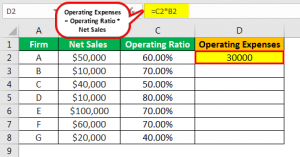

Let’s look at a real-world example using two of the most popular mutual funds in the world: There are better funds out there with no front-load or back-load. If you see a front-load or a back-load fee you should run away. Lowest possible front-load/back-load fee: $0. In reality though, this fund charges a 5.75% front-load fee! That money goes straight in the pocket of your financial advisor for bringing you on as a client. With a name like “American Funds”, you’d think it’s an amazing, patriotic investment. One of the largest mutual funds in the world is $ABALX, American Funds American Balanced A. That means that if you invested $10,000 into that fund, you’d pay a $575 fee first, then the rest would be invested ($9,425 in total). These are shown as a percentage, for example “front load of 5.75%”. These are notoriously awful and should be avoided at all costs. The lower the better!įront-Load/Back Load Fees: Front-load and back-load fees are one-time expenses when you buy a fund (front-load) or when you sell a fund (back-load). I try to pay under 0.05% for a US fund, 0.10% for bond funds and 0.20% for international funds. Most other brokerages offer a few funds with a very low fee. All funds at Vanguard have a very low fee. Lowest possible expense ratio fee: Fidelity has a few funds with zero fees. In other words, if two funds were identical except for this fee, the one with the higher fee would have the lower performance. Instead, the expense ratio is built into the price of the fund. As an investor you never see this fee withdrawn from your account as you do with financial advisor fees. Vanguard has some of the lowest fees in the industry, and charges between 0.03% and 0.20% for most funds. This can range anywhere from 0% to over 2%. 0.5% to 1% with an advisor.Įxpense Ratio Fees – Most mutual funds and ETFs charge what’s called an “expense ratio fee”. Lowest possible advisor fee: $0 if you manage your own portfolio. This fee is paid out by you directly to the advisor.

Even Roboadvisors like Wealthfront and Betterment charge a fee for assets under management. The four types of fees that are most prevalent include:įinancial Advisor Fees – These range from 0.25% of assets of under management up to over 1%. Let’s break these fees down one by one and see how much each of them “cost” us over time. That’s huge! That could be the difference if you can retire early or if you need to work for another decade. The longer your time horizon, the larger impact these fees will have on your portfolio!Īfter only 28 years, the amount in your account would be doubled if you invested this same amount yourself. The trick is that every dollar spent on these fees doesn’t compound. These lines are diverging by 2.63% a year – the difference between the fees charged. Take a look at how these fees stack up over time assuming constant market growth and the same performance: Investors that do look deeper into the impact of these fees are in for a shocking surprise. It’s small, so many investors don’t look deeper into it. If you’re new to investing, 2.67% may not sound like a lot. This is the situation that so many investors find themselves in. You read that right – Casual Investor is paying 66x more in fees to be invested in the same 500 companies that make up the S&P 500. In total, Casual Investor is paying 2.67% a year in fees, while Informed Investor is only paying 0.04%. $VFIAX does have an expense ratio as well, but it’s much lower – only 0.04%. Since they’re managing their own investments they don’t pay a 1% financial advisor fee. Informed Investor opened a Vanguard account and put all their money into $VFIAX, Vanguard 500 Index Fund Admiral Shares. In the second scenario we have Informed Investor. This $RYSOX fund also has a 1.67% expense ratio (!). One fund they invest in is $RYSOX, an S&P 500 fund that tracks the largest 500 companies in the United States.

For this fee, the advisor manages their portfolio and decides which funds to invest in. Casual Investor works with a financial advisor that charges a 1% fee. In the first scenario we have Casual Investor.
#Expense ratio calculator how to
This 3-month series of courses go over how to invest from scratch with an eye for reducing fees. Side note: If you want to learn to invest for yourself, check out the Minafi Investor Bootcamp. Many investment fees can be avoided – either by choosing different funds, switching to a lower-cost brokerage or investing for yourself. Investment fees often seem small, but can add up to be a large part of your portfolio over time. Every fee you pay to your financial advisor, to an expense ratio, a bank, or a transaction fee is money that isn’t compounding and making you more money.


 0 kommentar(er)
0 kommentar(er)
